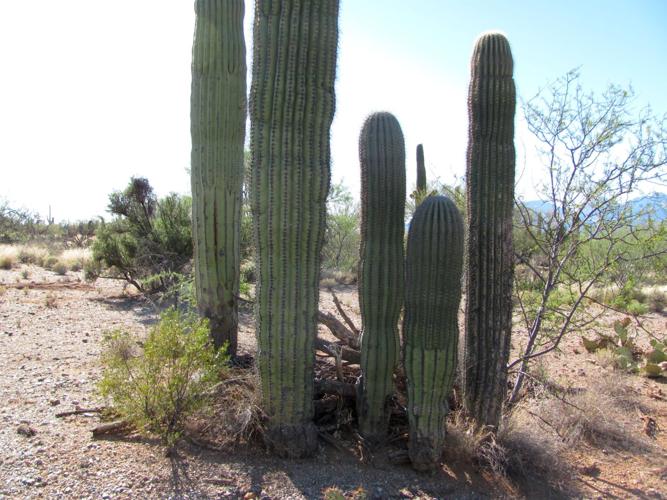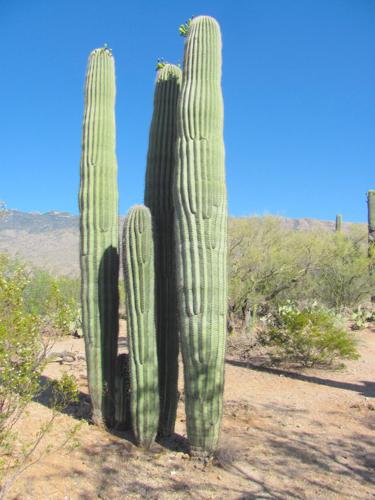Perhaps you have noticed “saguaro clusters” — groups of three or more saguaros growing extremely close together and sometimes even touching one another rather than being spread across the desert.
Several areas around Tucson, including a trail in Saguaro National Park East and parts of Ironwood Forest National Monument northwest of the city, appear to have many of them.
“We always enjoy finding these clusters around the park,” said Don Swann, a biologist with Saguaro Park. “Local saguaro experts Tom Orum and Nancy Ferguson call them ‘saguaro choirs,’ which is a name I think captures them well.”
But why do saguaros sometimes grow as if they are in a crowded elevator instead of the vast, open desert, where there is usually plenty of space to stand alone?
“My guess is that these saguaros are probably in an area of favorable soil where a number of seeds fell around the same time — and that there quite likely was a nurse tree there at the time they were young,” Swann said. “In fact, you can see what appears to be a dead palo verde” in photos of one of the clusters. Palo verde trees sometimes serve as “nurse trees” by shading young saguaros as they get their start.
Mark Dimmitt, a cactus expert and retired director of natural history at the Arizona-Sonora Desert Museum, said soil and weather conditions — along with birds and bats — might be factors in producing saguaro clusters.
“I think it’s mostly random chance, although soil and rainfall events probably favor mass establishment in some locations and times,” Dimmitt said.
“Birds and bats defecate saguaro seeds by the trillions every year, the birds mostly while perching in trees,” he said. “There are a couple of places in Ironwood Forest National Monument where there are many such clusters, up to 20 under one nurse tree.”
Where to see them
The clusters can show up almost anywhere in deserts near Tucson, but here are two areas where a short walk leads to several:
- The Cactus Forest Trail in Saguaro National Park east of Tucson. A section of the trail with several clusters begins near the Broadway Trailhead near the dead-end of Broadway.
- The first half-mile of the Esperero Trail, which begins near the visitor center in Sabino Canyon at 5700 N. Sabino Canyon Road.










